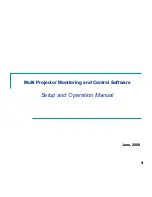
6
7
1.2 What is SMART EDIT?
The software is a non-linear editor. All video
and audio data is stored on the system hard
drive and can then be separated into individual
scenes. These scenes can be trimmed as desired
and added to a storyboard. It is possible to add
many different transitions between the scenes.
You can mix with six stereo tracks, mixing origi-
nal sound, various pieces of music, and com-
mentary. A large selection of fonts and effects
makes our Titler powerful, yet easy to use.
All of this is meant for the user who is not
familiar with computers. Its goal is simplicity of
use, even though the power and versatility of
the system makes for almost endless creative
possibilities. Also, SMART EDIT is not affected
by limitations in recording duration that typically
apply to computers.
1.3 HDV Video material
SMART EDIT 5 allows for editing of both, DV
projects (4:3 and 16:9) and HDV projects (16:9).
SMART EDIT 5 treats HDV projects as follows:
HDV is processed in the background, whilst
DV is processed directly on screen – this is the
quality you are seeing. It requires continuous
rendering to convert HDV material in DV
and to display it in 16:9 anamorph format.
In the background, `unseen´ by the user, the
HDV material is edited and cut in parallel. All
editing information is saved and stored. This
information is later taken up, bit by bit, when
outputting the finished video. The result is
HDV quality with precisely the same editing
decisions.
HDV stands for `High Definition Video´ and
represents the HDTV (`High Definition TV´)
standard for camcorders.
To create HDV films, you require a high-
resolution HDV camera – such cameras are
today available from most manufacturers. Such
a `switchable´ camcorder allows you to film not
just normal DV videos, but also HDV.
The high-definition format is stored in a more
effective compression form (MPEG-2) directly on
the DV tape.
SMART EDIT gives you two options to read your
HDV material, which can be set in the record
screen (see chapter 5.4, item (3)):
1. You load your video footage into the system,
and there it is converted from HDV into DV. Or…
2. You load your HDV video footage into the
system, then you switch your camera to DV
mode and load that DV stream into the system
again.
SMART EDIT 5 supports both currently popular
formats: HDV 1440 x 1080 i and HDV 1280 x 720
p.
HDV rendering occurs (e.g.) when creating
a new scene, importing using the clipboard,
finishing a project or when using special effects.
Note
: We would like to point out the necessity
of using HDV tapes when recording footage to
the HDV Recorder and/or Smart Edit 5 editing
software (which allows HDV editing)!
The special surface coating of these tapes
considerably reduces the drop-out rate. Drop-
outs lead to evidently more problems in
MPEG method in HDV recordings than during
standard DV filming. Unlike the DV method,
HDV recordings may loose an entire Group of
Pictures (GOP) due to a drop-out.
This results clearly in more significant picture
faults and problems during transfer and editing
of such flawed footage.
1.4 Structure of this user manual
This manual explains the SMART EDIT functions
but refers to various hardware systems.
As the units running SMART EDIT may have dif-
ferent technical specifications, this may result in
differing software functionality. Such differences
are highlighted in the respective parts of this
manual.
This manual is divided into two main parts and
several appendices.
Содержание SMART EDIT 5
Страница 1: ...User manual SMART EDIT 5 2nd edition ...
Страница 100: ...274 06 06 ...







































